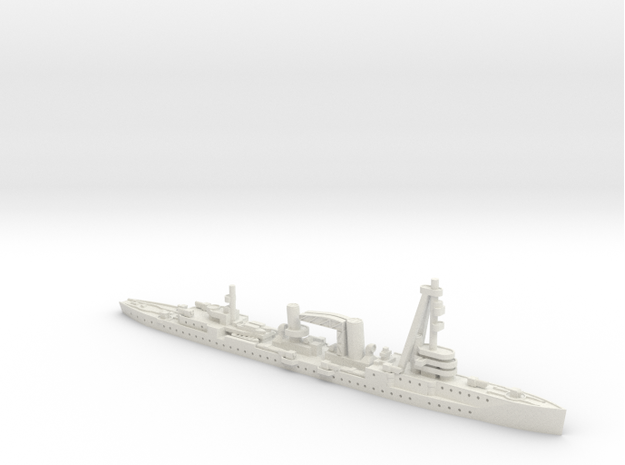Model Information: PWRS introduced this body style in 2008.
Prototype History:
In the 1970's, Canadian National & Canadian Pacific developed a concept for a standard 4550 cubic-foot 4-bay cylindrical hopper. The basic design of this hopper was developed into two car types, one for grain and similar consistency products and another for potash, dry chemicals and fertilizers.
The most obvious difference between these two types of cars can be seen in the loading hatches on the top of the cars. The grain version of the car has trough hatches spanning the length of the body top, while the potash version has a series of round hatches spaced along the length of the body.
During the production life of the design, thousands of these care were manufactured in various production runs by three different manufacturers. Hawker Siddeley produced many of these cars over the production run, and in total produced 15 variations of the basic design between the grain and potash types of this car.
Today, thousands of these cars remain in service with Canadian Pacific, Canadian National and a number of other operators. Many can be seen in their original "Heritage" paint schemes, as well as more modern schemes, such as the colorful 2008 Green Saskatchewan Grain Car Corporation scheme. Though they initially were primarily seen in Canada, they now travel the rails of North American from Canada to Mexico, with operations in many parts of the United States.
The most obvious difference between these two types of cars can be seen in the loading hatches on the top of the cars. The grain version of the car has trough hatches spanning the length of the body top, while the potash version has a series of round hatches spaced along the length of the body.
During the production life of the design, thousands of these care were manufactured in various production runs by three different manufacturers. Hawker Siddeley produced many of these cars over the production run, and in total produced 15 variations of the basic design between the grain and potash types of this car.
Today, thousands of these cars remain in service with Canadian Pacific, Canadian National and a number of other operators. Many can be seen in their original "Heritage" paint schemes, as well as more modern schemes, such as the colorful 2008 Green Saskatchewan Grain Car Corporation scheme. Though they initially were primarily seen in Canada, they now travel the rails of North American from Canada to Mexico, with operations in many parts of the United States.
Road Name History:  Saskatchewan Grain Car Corporation (reporting marks SKPX, SKNX) was a Canadian crown corporation owned by the Government of Saskatchewan established on October 2, 1979 to purchase and rent grain rail cars for the transportation of statutory grains between Saskatchewan and export ports. The corporation was governed by the Saskatchewan Grain Car Corporation Act. In 1990 the government invested $55M in the corporation for the purchase of 1,000 new covered rail cars. Priority in the rental of rail cars was given to short-line operators in the province. In March of 2017, the Government of Saskatchewan announced that it would be selling off nearly 1,000 hopper cars as the Saskatchewan Grain Car Corporation was going to be wound down.
Saskatchewan Grain Car Corporation (reporting marks SKPX, SKNX) was a Canadian crown corporation owned by the Government of Saskatchewan established on October 2, 1979 to purchase and rent grain rail cars for the transportation of statutory grains between Saskatchewan and export ports. The corporation was governed by the Saskatchewan Grain Car Corporation Act. In 1990 the government invested $55M in the corporation for the purchase of 1,000 new covered rail cars. Priority in the rental of rail cars was given to short-line operators in the province. In March of 2017, the Government of Saskatchewan announced that it would be selling off nearly 1,000 hopper cars as the Saskatchewan Grain Car Corporation was going to be wound down.

Brand/Importer Information: North American Railcar is a manufacturer of N Scale model rolling stock. NAR is a subsidiary of Pacific Western Rail Systems, a hobby shop based in Surrey, British Columbia, founded by owner Dan Huberman. PWRS has been working with Micro-Trains for decades producing special runs of MTL cars for sale exclusively through their store. In 2008, PWRS started production of their own body styles - which are also exclusively sold through the PWRS storefront under the brand name North American Railcar. As of 2016 they produce three body styles each with several variations to achieve prototypical accuracy. In 2017 they announced production of a fourth body style.
Item created by: gdm on 2018-07-27 09:20:12
If you see errors or missing data in this entry, please feel free to log in and edit it. Anyone with a Gmail account can log in instantly.
If you see errors or missing data in this entry, please feel free to log in and edit it. Anyone with a Gmail account can log in instantly.










